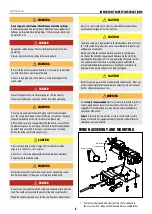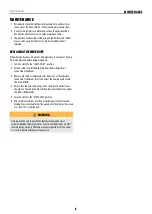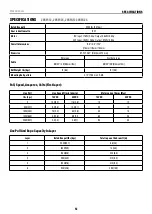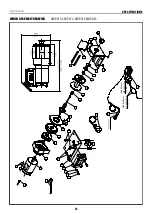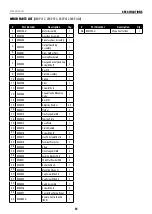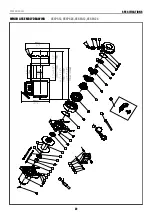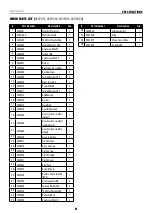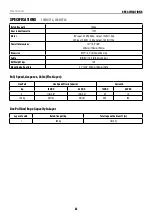
WINCH MANUAL
WINCHING TECHNIQUES A-Z
7
NOTICE
For pulls over 70% rated line pull, we recommend the use of the snatch/
pulley block to double line the wire rope. This reduces the load on the
winch and the strain on the rope.
Single Line
Double Line
DANGER
Never use your winch for overhead hoisting, lifting of people, moving
people or moving of live animals.
WINCHING TECHNIQUES A-Z
a. Take time to asses your situation and plan your pull.
b. Put on gloves to protect your hands.
c. Disengage the clutch where possible to allow free-spooling and also
save battery power.
d. (If supplied) Attach the hand saver hook to the clevis hook.
e. Pull out the wire rope to your desired anchor point safely.
f. Secure the clevis hook to the anchor point: Sling, chain or snatch block.
Do not attach the hook back onto the wire rope.
g. Engage the clutch.
h. Connect the remote control lead to the winch.
i. Start your engine to ensure power is being replenished to the vehicle
battery.
j. Power in the wire rope guiding the wire under tension to draw up the
slack in the wire. Once the wire is under tension stand well clear. Never
stand or step over the wire rope under tension.
k. Double check your anchors and make sure all connections are secure.
l. Inspect the wire rope. Make sure there are at least 5 wraps of wire rope
around the winch drum.(usually marked with red)
m. Drape a blanket or sail (Sold separately) over the wire rope
approximately 5 to 6 feet from the hook. Open the hood/bonnet for
added protection.
n. Clear the area. Make sure all people, spectators are well back and that
no one is directly in front or behind the vehicle or anchor point.
o. Begin winching. Be sure that the wire rope is winding evenly and tightly
around the drum. If needed, the vehicle that is being winched can be
slowly driven to add assistance to the winching process. Avoid shock
loading; keep the wire rope under tension.
p. The vehicle to be winched should be placed in neutral and the
emergency brake released. Only release the brake pedal when under full
tension. Avoid shock loading to the winch. This can damage the winch,
rope and vehicle.
q. The winch is meant for intermittent use. Under full load with a single
line rig do not power in for more than 8 minutes without letting the motor
cool down for a few minutes and then resume the winching operation.
r. The winching operation is complete once the vehicle is on stable ground
and or can drive under its own power.
s. Secure the vehicle. Be sure to set the brakes and place the vehicle in
park.
t. Release the tension on the wire rope. The winch is NOT designed
as securing device and should NEVER hold a load or secure whilst in
transport, winch cable MUST be released when equipment or vehicle is
secure. Not doing so will possibly damage the brake and winch and void
any warranty.
u. Disconnect the wire rope from the anchor and NEVER leave connected.
v. Rewind the wire rope. Make sure that any wire already on the drum has
spooled tightly and neatly. If not, draw out the wire and re-spool from the
point where the rope is tight.
w. Keep your hands clear of the winch drum and fairlead as the wire rope is
being drawn in.
x. Secure the hook and hook strap.
y. Disconnect the remote control lead and store in a clean, dry place.
z. Clean and inspect connections and mounting hardware for next
winching operation.





